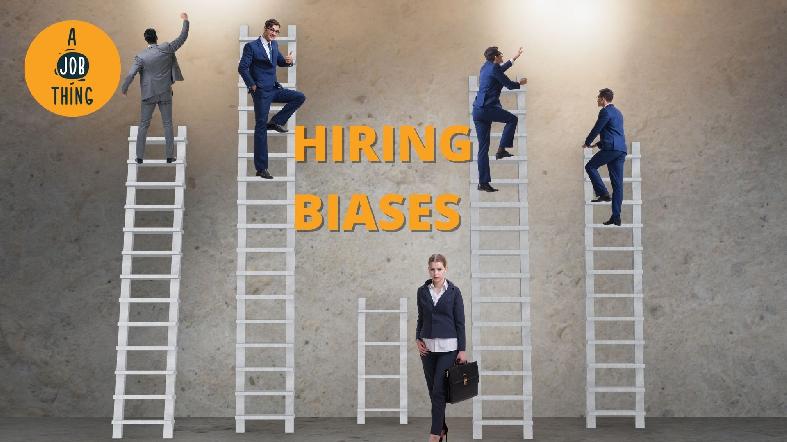
The Most Common Types of Hiring Bias You Should Look Out For
Are You Hiring?
Find candidates in 72 Hours with 5+ million talents in Maukerja Malaysia & Ricebowl using Instant Job Ads.
HIRE NOW
One of the most common recruiting metrics is time-to-fill. It's the number of days it takes to fill a job from the time the opening occurs to the time the candidate accepts the job offer. According to a study, the average time-to-fill is 36 days.
But, according to another source, the average length of the job interview process is 24 days. Based on both these numbers, this means the rest of the entire recruiting process is 12 days. Twelve days to plan, source, select, background check, and so on. So much to do, so little time.
If the company spends two-thirds of their time interviewing candidates, it seems like they should dedicate a comparable amount of time to making the right decision. Not necessarily equal, but close given how long it takes to interview. Because getting the selection part of the hiring process wrong can be costly.
.jpg)
Types of bias
If organisations try to speed up the hiring process, they could be opening themselves up to adding bias, which is defined as adding a prejudice in favour or against someone or something that's considered to be unfair. Here are ten common forms of bias and examples of how we might see each in a recruiting situation:
1. Stereotyping
This occurs when an interviewer assumes that a candidate has specific traits because they are a member of a group. For example, an interviewer who prefers male candidates because they think women are too emotional to handle the job.
2. First-impression errors
This bias takes place when an interviewer bases their entire view of a candidate on their first impression. Usually, they based it on the candidate's choice of clothing. "Lee came to the interview in jeans, he's not serious about this interview." Or tattoos. "Did you see that tattoo Adam had on his arm? He's not the right fit for our company."
3. Nonverbal bias
It happens when an interviewer is influenced by body language. For instance, the room is cold so the candidate folds their arms, and now the interviewer thinks that they're no longer interested. it also appears when the candidate is nervous and fails to make good eye contact during the interview.
4. The Similar-to-Me Error
This bias happens when the interviewer rates the candidate based on characteristics that the evaluator sees in themselves. They think that if they're good at their job, then someone who's similar to them will also be good at it. The problem with this thought process is that organisations need diversity to innovate and grow.
.jpg)
Even candidates have their own biases.
5. Inconsistent questioning
It occurs when an interviewer doesn't use a standard list of questions for each interview and cannot compare candidates to the same performance measure. Behavioural interviews are one way to bring consistency to the process.
6. Negative emphasis
This one takes place when an interviewer makes assumptions about a candidate based on a small amount of negative information that is shared. An example will be if a candidate shares that they "failed" at something or made a "mistake". Then all of a sudden, they're no longer suited for the job.
7. The Halo effect
This effect happens when a recruiter or hiring manager allows one positive qualification or trait to take priority over everything. This causes the interviewer to unfairly favour the candidate. For instance, "Ahmad has a lot of enthusiasm, so naturally, he would be the most qualified for the job."
8. The Horn effect
This effect is the contrary of the Halo effect. In this circumstance, one negative trait or qualification takes priority and leads to unfair prejudice towards the candidate. For instance, "Ali seemed nervous during the interview. He's not going to be able to handle the pressure of working here."
9. Contrast effect
This bias happens when an interviewer compares candidates to each other rather than assessing the organisation's performance standard. As in, "Amir is a better candidate than Leonard." It's crucial during the selection process for the recruiting team to use valid and reliable information to make their hiring decision.
10. Cultural Noise
This occurs when candidates answer questions based on what they think will get them the job rather than what they believe or would do. This is exactly why you tell candidates not to "Fake it!"
Recruiting is tough right now. But the last thing that organisations want to do is spend a lot of resources finding and interviewing candidates only to select the wrong person. Part of choosing the right candidate is taking our biases out of the process. The way we do that is by maintaining our awareness that biases exist.
Organisations can make sure that human resources and hiring managers stay aware of bias by using this type of information during interview skills training.
Want to learn more about AJobThing?
Source: HR Bartender
Related articles
Are Interviewers Biased Towards Candidates Who Come In Last?
How Long Should a Candidate Consider the Job Offer?
Malaysia's Unemployment Rate Decreases Again





